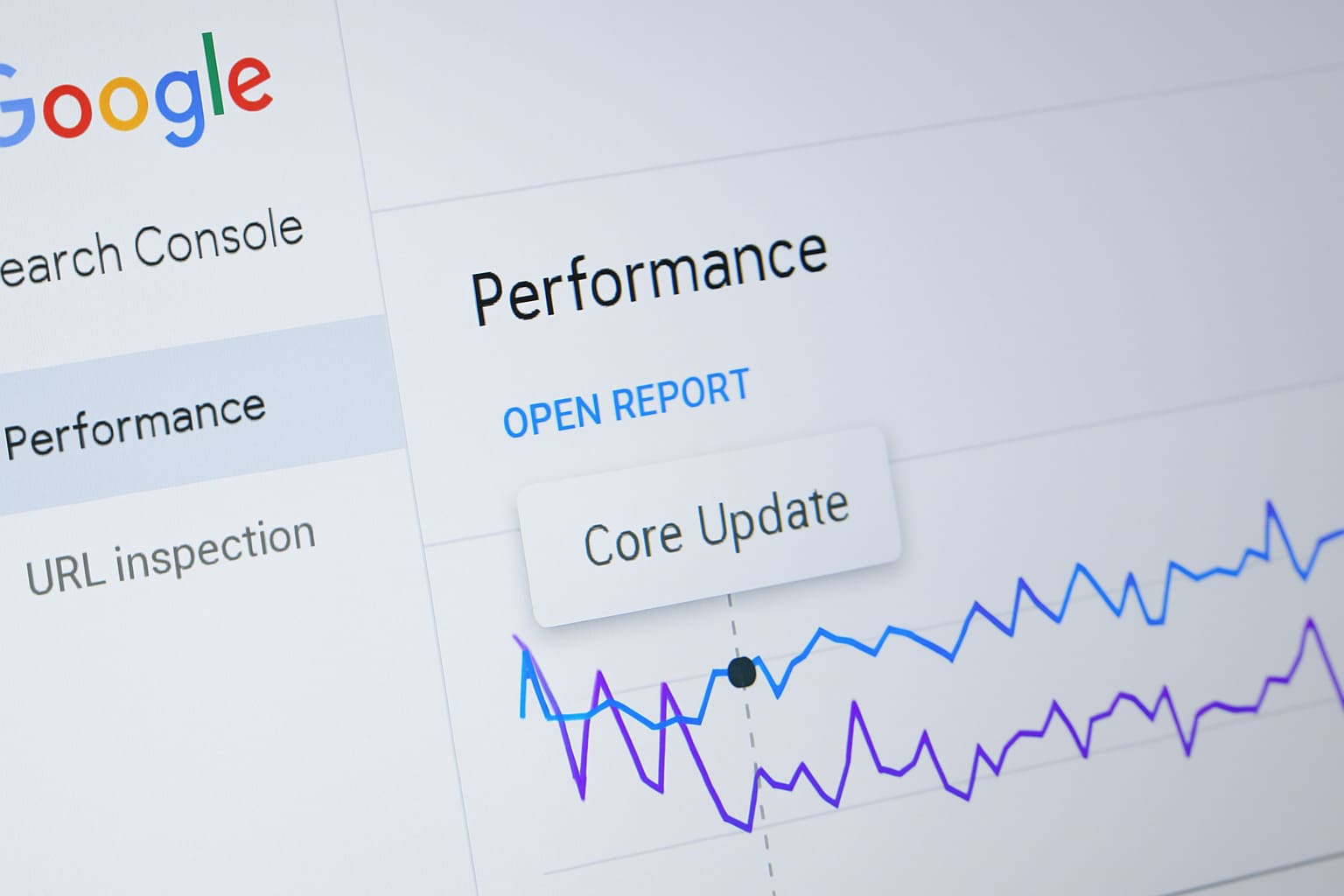Are you looking for a solution to your website traffic problems after a Google Algorithm Update? Google updates its algorithms consistently, and these changes can sometimes confuse. It can take a lot of work to get your website back on track after a major search engine optimization shakeup. That’s why we’ve created the ultimate blog to help you understand what happened and get your website traffic back in the game!
What are Google Algorithms Updates?
Google algorithms are the set of rules and guidelines that Google uses to determine the relevance and quality of websites. Google’s algorithm updates denote modifications to its crucial ranking systems, transforming how it assigns ranks to web pages and presents search results to users. Since there are numerous ranking factors at play and specific details about updates are often undisclosed, adapting to and preparing for these updates can be challenging.
These updates are part of Google’s ongoing efforts to provide users with the most pertinent search results in response to their queries. The most significant of these updates are referred to as “broad core algorithm updates”. This means websites that do not adhere to best practices, as specified in the Google Webmaster Guidelines, may experience a negative impact on their rankings due to these algorithm updates.
Impact of algorithm updates on website traffic
Google algorithms are constantly evolving in response to changing user behavior and expectations. These updates aim to provide users with the best possible search experience by displaying the most relevant and high-quality content. As a result, websites that do not align with these updates may experience significant drops in their search engine rankings and, subsequently, their website traffic.
The impact of algorithm updates can vary from minor changes to major fluctuations in website traffic. Understanding how they work is essential to recovering from any decrease in traffic. Let’s take a look at some of the ways algorithm updates can affect your website traffic:
- Drop in rankings: If your website was ranking well for certain keywords before an algorithm update, it may experience a sudden drop in rankings after the update. This can significantly decrease your website traffic, as it may no longer appear on the first page of search results. This means that fewer people will be able to find your website through search engine queries.
- Changes in search engine result pages (SERPs): After an algorithm update, the order of search results may change, and new websites may start ranking higher. This can affect your website’s visibility and, ultimately, its traffic.
- Penalties: If your website violates Google’s guidelines, it may receive a penalty after an algorithm update. This can result in a significant decrease in traffic or even removal from search results altogether.

Understanding Google Algorithm Updates
Why does Google update its algorithms?
Google constantly works to improve its search engine’s performance and provide users with the most relevant and high-quality content. Algorithm updates are essential for this as they allow Google to adapt to changing user behavior and expectations. For example, Google’s mobile-first indexing update was implemented in response to the increasing use of mobile devices for internet browsing. This update ensured that websites with mobile-friendly designs and content were given priority in search results.
How often does Google release algorithm updates?
Google releases thousands of algorithm updates approximately every year, which means almost every day, but only some of these changes have a significant impact. The major updates that can significantly affect website traffic are released several times a year and termed broad core algorithm updates. It’s essential to keep track of these updates and understand how they may affect your website’s traffic.
What are the Types of algorithm updates?
While Google releases numerous updates each year, there have been a few significant algorithm updates that have had a considerable impact on website traffic. Let’s take a look at some of the most well-known and impactful ones:
Panda
Introduced in 2011, this update aimed to decrease the visibility of low-quality content and spammy websites in search results. Websites with duplicate or thin content, as well as those with a high number of ads, were affected by this update.
Websites that recovered from the Google Panda update did so by updating the content across the site, removing annoying “above the fold” advertisements, and improving the overall user experience. This should be the standard for every website, so ensure that the content on your site is of a high quality.
Penguin
Launched in 2012, the Penguin update is an extension of the Panda update that targeted websites that used black hat SEO techniques such as keyword stuffing and buying backlinks to manipulate search engine rankings. This update penalized websites that violated Google’s webmaster guidelines.
To recover from this update, websites had to fix any issues with their backlink profiles and ensure they were following Google’s guidelines. After the launch of Penguin 1.1, Google introduced five more versions of the algorithm. The journey reached its peak with Penguin 4.0 in September 2016, when it became an integral part of the core ranking algorithm. Throughout these iterations, Google aimed to enhance word choice, structure, readability, and eloquence while preserving the original intent.
Hummingbird
Implemented in 2013, the Hummingbird update marked a significant shift in how Google’s algorithm interpreted search queries. It focused on understanding user intent rather than just keywords, allowing for more accurate and relevant search results. Hummingbird marked the introduction of semantic searches, revolutionizing Google’s ability to comprehend the broader context surrounding keywords.
Additionally, this update brought about a transformation in Google’s knowledge graph, a collection of SERP features on the right-hand side of search results, offering users essential information about individuals or topics. The information displayed in the knowledge graph is tailored to match the intent behind the search query. Websites that provided valuable and relevant content saw an increase in traffic after this update.

Mobile-First Indexing
With the increasing use of mobile devices for internet browsing, Google introduced the Mobile-First Indexing update in 2018. This change meant that Google would primarily use the mobile version of a website for indexing and ranking, ensuring a better user experience for mobile searchers.
With this update, having a mobile-friendly website was no longer just a recommendation but a necessity for ranking well on Google. Websites that were not optimized for mobile devices saw a significant dip in traffic, while those with mobile-friendly designs benefited from this update. Since then, Google has been rolling out more updates focused on improving the user experience for mobile users.
How To Identify If Google Algorithm Update Has Hit Your Website?
While Google’s core algorithm updates can bring about positive changes for numerous websites, the converse holds for those who need to align their websites with the Webmaster Guidelines and optimize them accordingly. The first step to recovering from a Google algorithm update is to identify whether your website has been affected or not. Here are some potential signs that a recent update may have hit your website:
A sudden drop in organic search traffic, especially if it is significant and occurs within a short period.
- A decrease in rankings for targeted keywords: If your website has been previously ranking well for specific keywords, but now it is not showing up on the first page of search results, this could be a sign that an algorithm update has hit it.
- A decline in indexed pages: If your website’s number of indexed pages decreases significantly, it could indicate that Google is seeing your site as being of lower quality.
- A sudden increase in keyword rankings: While this may seem like a positive sign, a significant and sudden increase in keyword rankings could be due to illegitimate SEO tactics such as black hat techniques or fake backlinks. This could result in your website being penalized by an algorithm update later on.
Once you find out that a core algorithm update has been released, it is important to monitor your website’s performance. If you notice any of these signs on your website, it’s essential to conduct a thorough analysis of your site’s backlink profile, content, and overall user experience. Identifying the issue will help you take corrective measures and ensure that your website is in line with Google’s guidelines.
Steps to Recover Your Website Traffic After a Google Algorithm Update
Predicting when Google will make changes to its algorithm or release core algorithm updates is impossible. As a result, you can only prepare by ensuring your website complies with Google’s webmaster guidelines.
If an update negatively impacts your performance, prioritize conducting technical checks and enhancing the quality of your content. This will ensure that it remains relevant and valuable to users, aiding in your initial recovery.
Recovering from a Google algorithm update may seem like an overwhelming task, but it is essential to take immediate action to prevent further damage to your website’s traffic and rankings. Here are some steps you can take to recover from a core algorithm update:
Analyze the update and its impact on your website
As mentioned earlier, the first step is to identify the potential cause of the drop in traffic or rankings. It would help if you started with an overall health check of your site. You can find various tools for this, such as Google Search Console, for any manual actions. crawlability or indexing issues. Google Analytics for identifying any traffic drop or revenue. Even analyze your website for issues with content quality, backlinks, and user experience.
Evaluate your website’s content and make necessary changes
Analyze your website’s content to ensure that it is relevant and valuable to users. If necessary, update or remove low-quality content and focus on creating high-quality, engaging content. This will help improve your website’s relevance and authority in the eyes of Google. Stay informed about any future algorithm updates and make changes to your website accordingly.
Improve Mobile First user experience
The significance of optimizing your website for mobile cannot be overstated. It is crucial to ensure that your website is accessible and user-friendly on mobile devices. Make sure your website is optimized for mobile devices, has fast-loading pages, and is easy to navigate. A good user experience not only improves your website’s search engine rankings but also keeps users engaged and increases the likelihood of conversions. If you want any help, you can check on a helpful guide released by Google webmasters, which is continuously updated.
Conduct a backlink audit and focus on quality backlinks
Suppose your website has been hit by an algorithm update due to spammy or low-quality backlinks. In that case, it is essential to conduct a thorough backlink audit and disavow any harmful links using tools like Google Search Console or Ahrefs. Focus on building quality backlinks from authoritative websites to improve your website’s credibility and authority in the eyes of Google. Also, make sure not to go after a quantity of backlinks but focus on the quality of backlinks.
Focus on high-quality content
With each algorithm update, Google emphasizes the importance of high-quality and relevant content. Ensure that your website provides valuable information to users and optimize it with appropriate keywords. This will not only help improve your website’s rankings but also make it more user-friendly and increase the likelihood of conversions.
Remember that recovering from a Google algorithm update takes time and patience. By following these steps, you can ensure that your website is better prepared for any future changes to Google’s core ranking algorithm. You are, overall, staying compliant with webmaster guidelines and focusing.

Tips to Boost Your Website Traffic After a Google Algorithm Update
In addition to taking the necessary recovery steps, here are some tips to help you boost your website’s traffic and rankings after a Google algorithm update:
- Stay updated on algorithm changes: Keep yourself informed about any upcoming algorithm updates or changes through reliable sources such as Google Webmaster Central Blog, Twitter accounts of Google’s webmaster trends analyst team, and reputable SEO news websites. This will help you stay ahead of any potential changes and make necessary adjustments to your website.
- Regularly monitor your website’s performance: Keep an eye on your website’s traffic, rankings, and other key metrics regularly. This will help you identify any sudden drops or fluctuations that may be caused by algorithm updates and allow you to take prompt action.
- Focus on user experience: Google’s algorithm updates are focused on providing a better user experience. Therefore, it is crucial to prioritize user experience and make necessary improvements to your website. This includes optimizing for mobile, improving page loading speed, and providing high-quality content.
- Diversify traffic sources: Relying solely on organic search traffic can leave you vulnerable to algorithm changes. Supplement your traffic with other sources such as social media, email marketing, and paid advertising. This will help reduce the impact of any future algorithm updates on your website.
- Create fresh, relevant, and high-quality content regularly: Regularly publishing fresh and relevant content is key to keeping your website’s rankings and traffic consistent. This will help attract more visitors to your site and improve its overall authority in the eyes of Google. Also, make sure to update previous content according to changes and webmaster guidelines regularly.
- Utilize social media platforms to promote your content: Social media can be a powerful tool in driving traffic to your website. Make sure to have an active presence on popular platforms such as Facebook, Twitter, and Instagram. Share your content regularly and engage with your audience to attract more visitors to your site.
- Keep up with SEO best practices: As search algorithms continue to evolve, it is important to keep up with current SEO best practices. This includes regularly updating your website’s content, optimizing for relevant keywords, and following ethical link-building strategies.
- Seek professional help: If you’re struggling to recover from a Google algorithm update or need assistance in implementing SEO best practices, consider seeking help from a professional SEO agency or consultant. They have the expertise and experience to guide you through the process and ensure that your website complies with webmaster guidelines.
- Stay patient and persistent: Recovering from a Google core algorithm update can be a challenging and time-consuming process. It’s important to stay patient, continue making necessary improvements to your website, and persistently monitor its performance. With dedication and perseverance, you will eventually see positive results.
While Google algorithm updates may cause temporary setbacks, they also provide an opportunity to improve and optimize your website for better performance in the long run. By following these tips and staying informed about algorithm changes, you can ensure that your website is well-prepared for any future updates and maintains a consistent flow of traffic. Remember, providing a positive user experience should always be the top priority for any website owner.
To Conclude
In this blog, we discussed the steps you can take to recover from a Google algorithm update and boost your website’s traffic. We highlighted the importance of conducting a backlink audit, focusing on high-quality content, and staying compliant with webmaster guidelines. Additionally, we provided some tips for maintaining consistent website traffic in the long run.
With dedication and persistence, your website will be able to weather any storm caused by algorithm updates and maintain its position in the rankings. Take action now and implement these steps and tips to boost your website’s traffic even after a Google algorithm update. Your hard work and efforts will pay off in the long run as you continue to see positive results.






